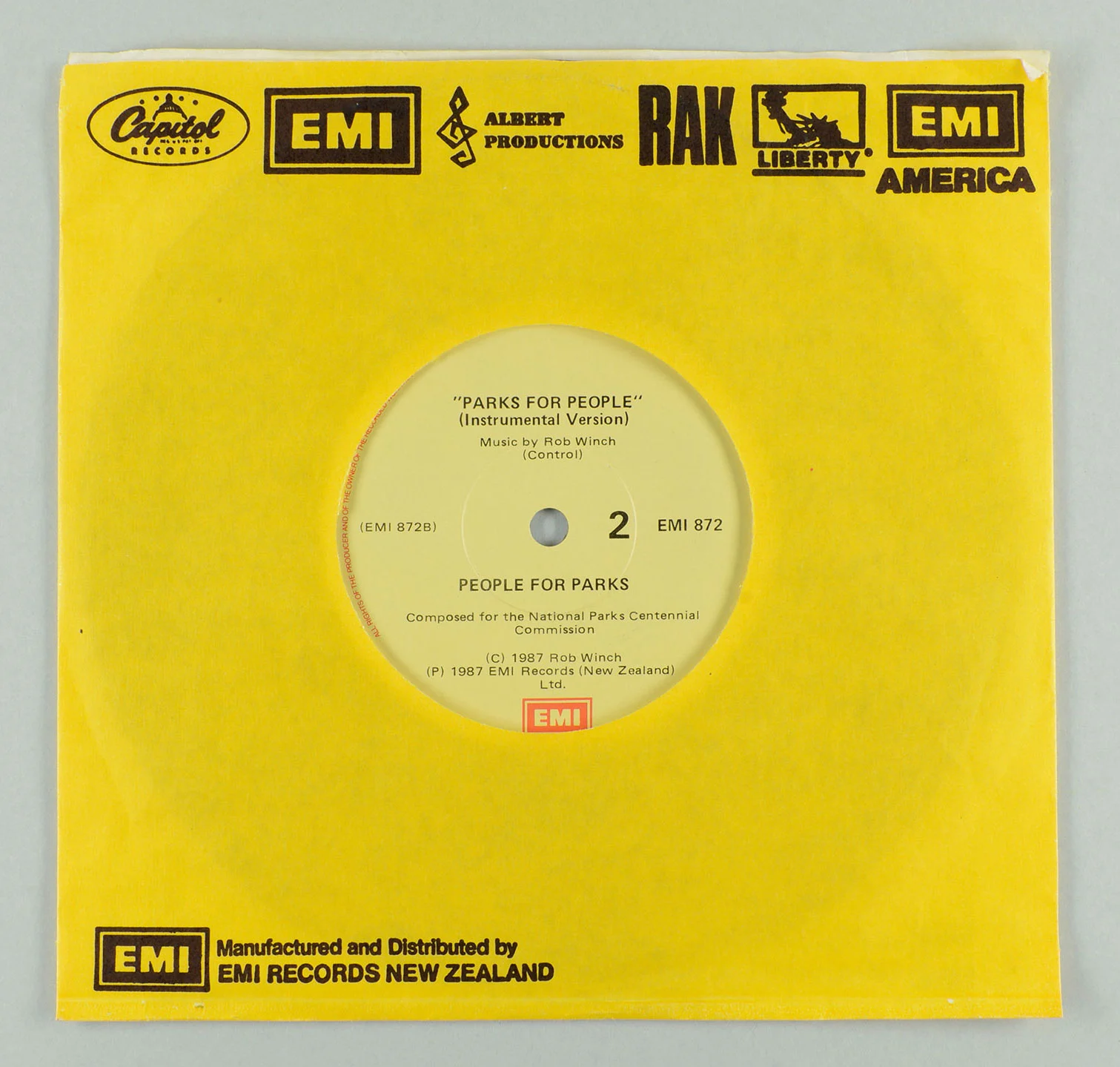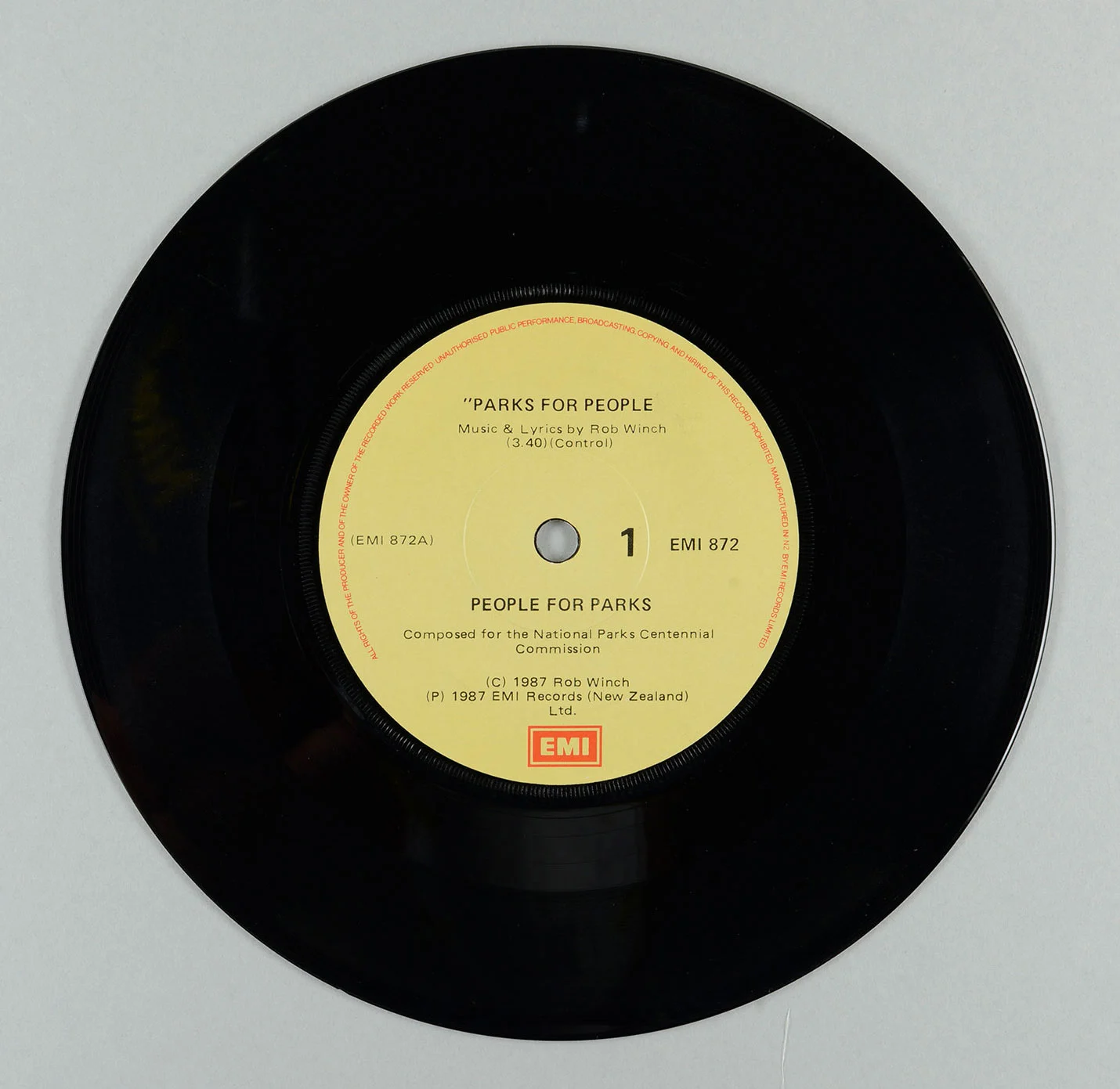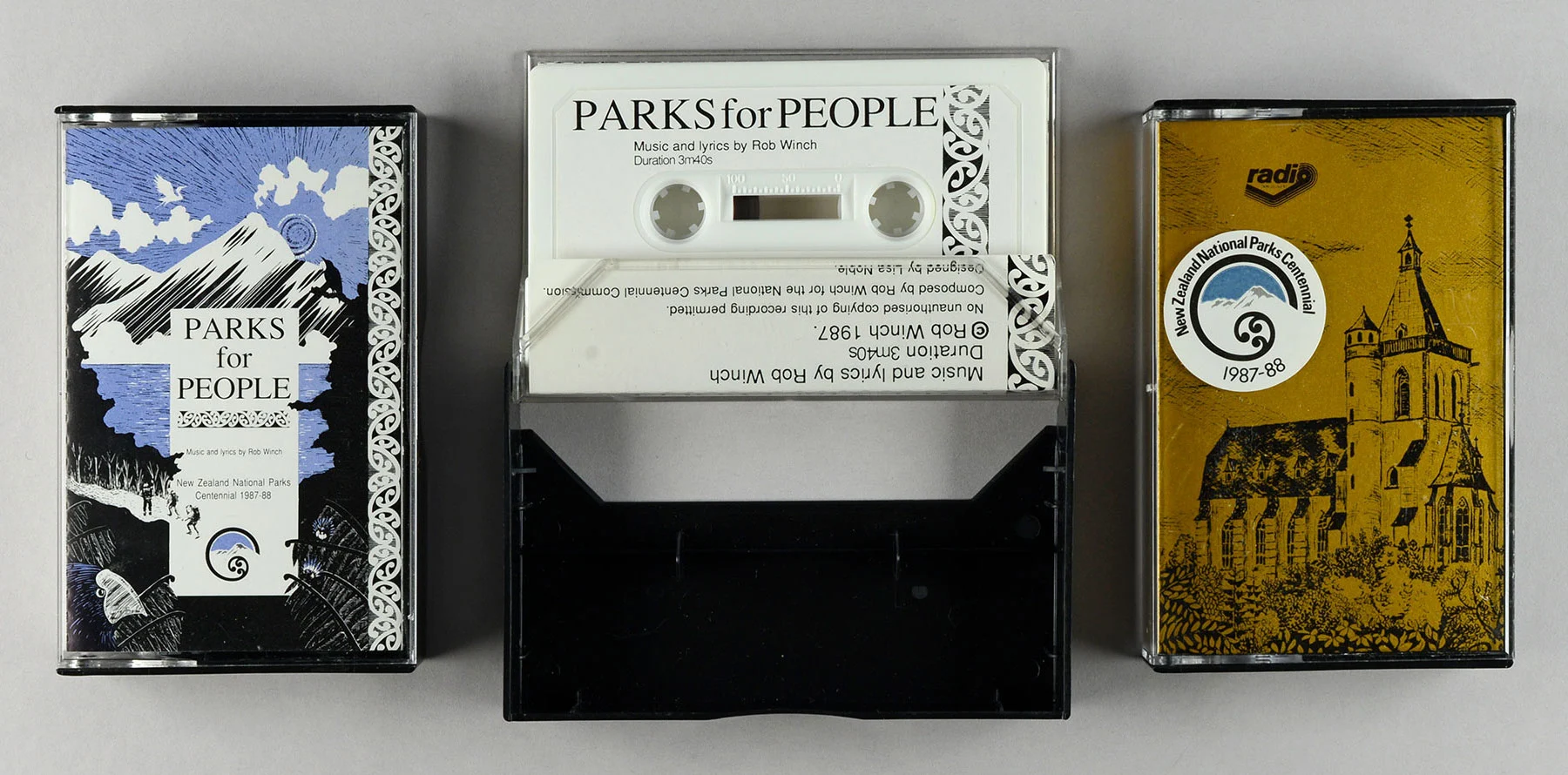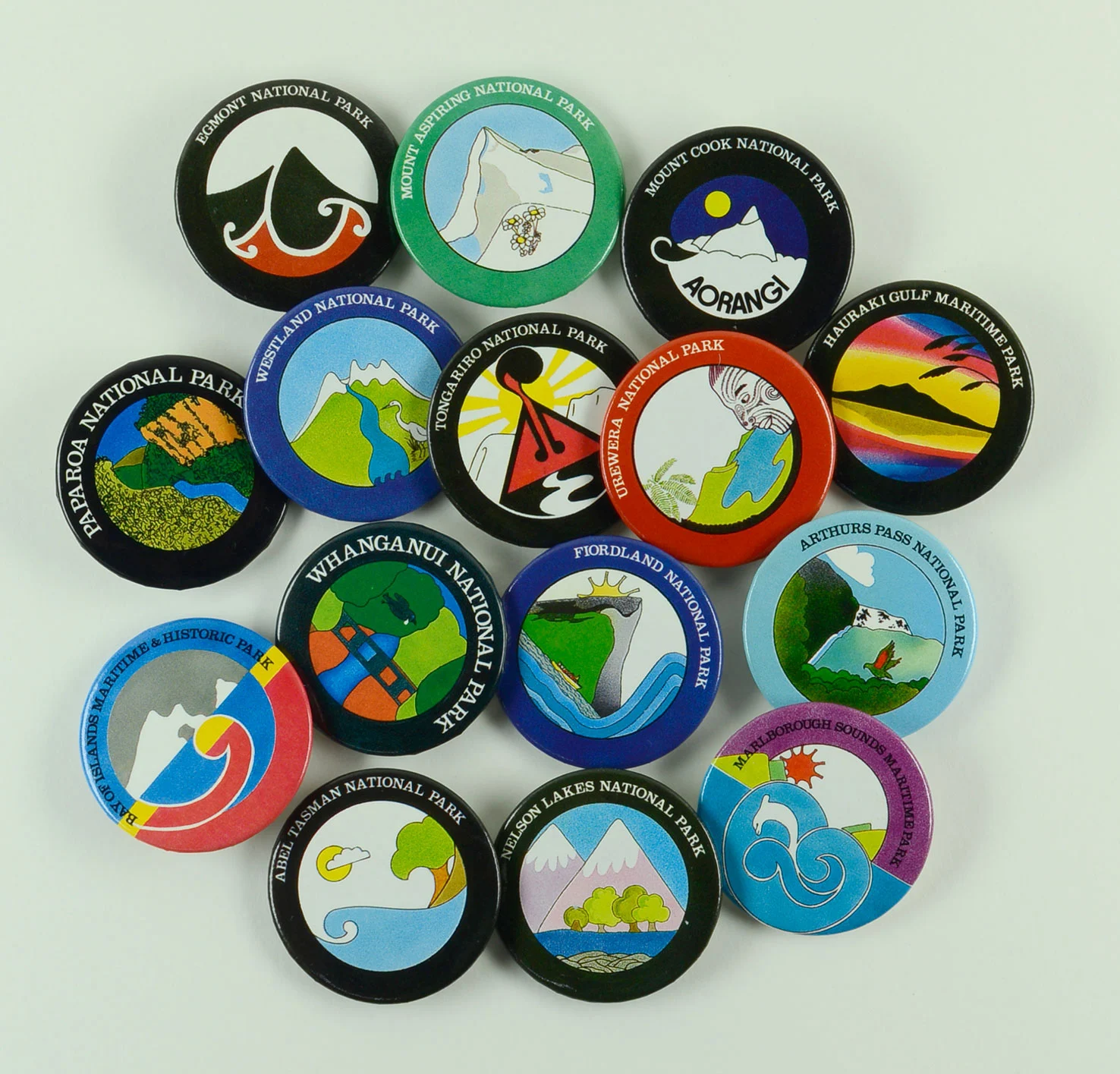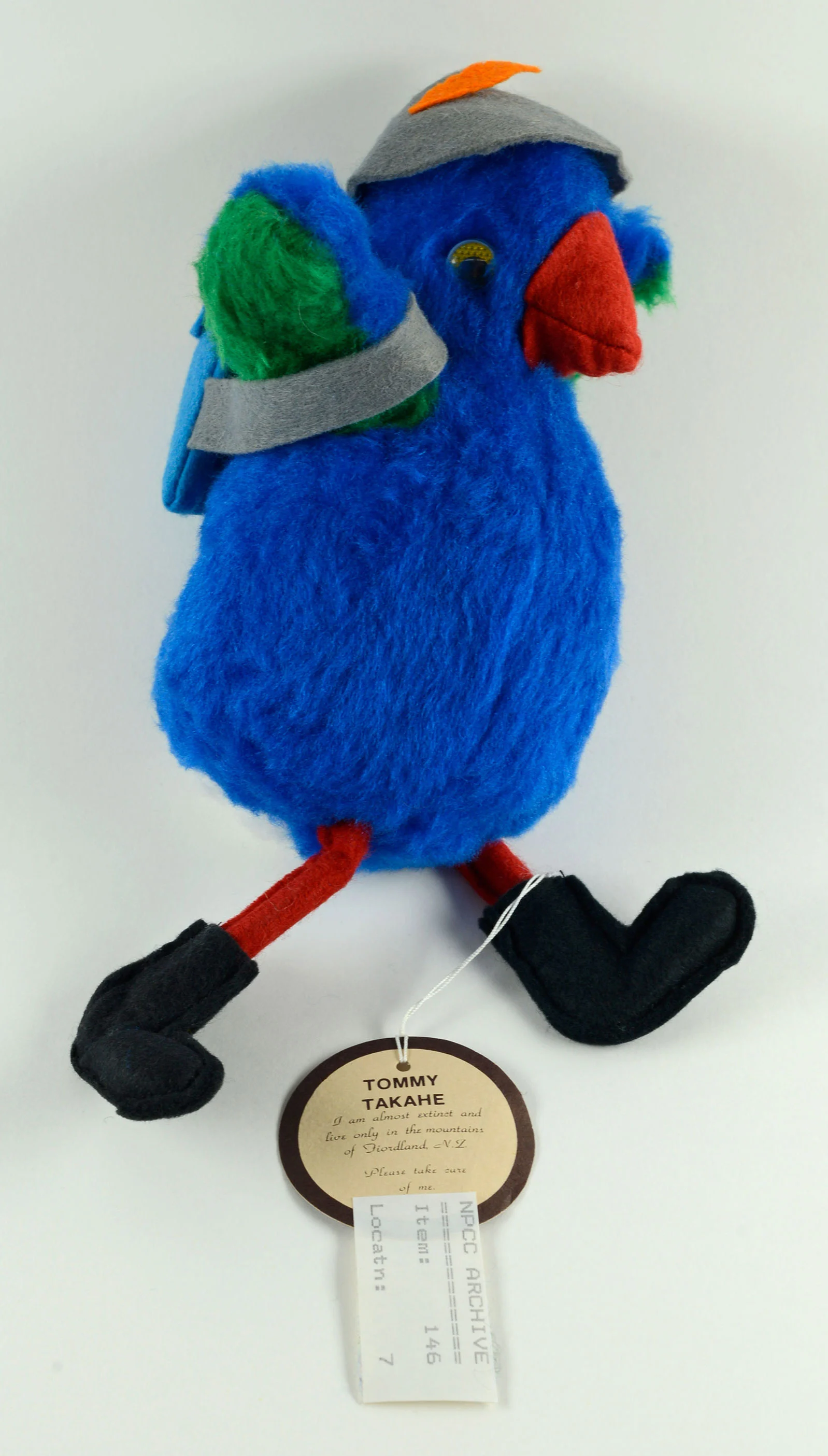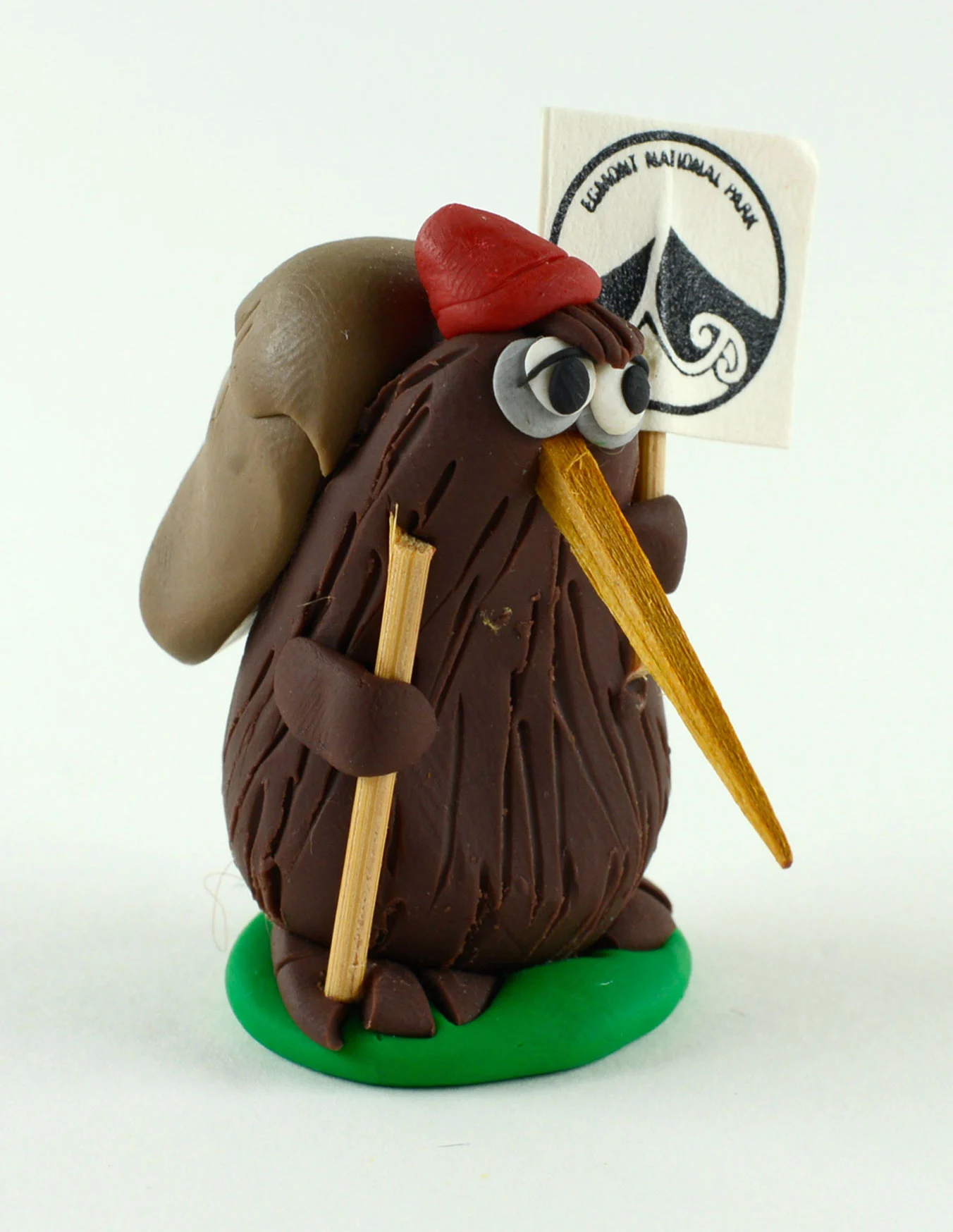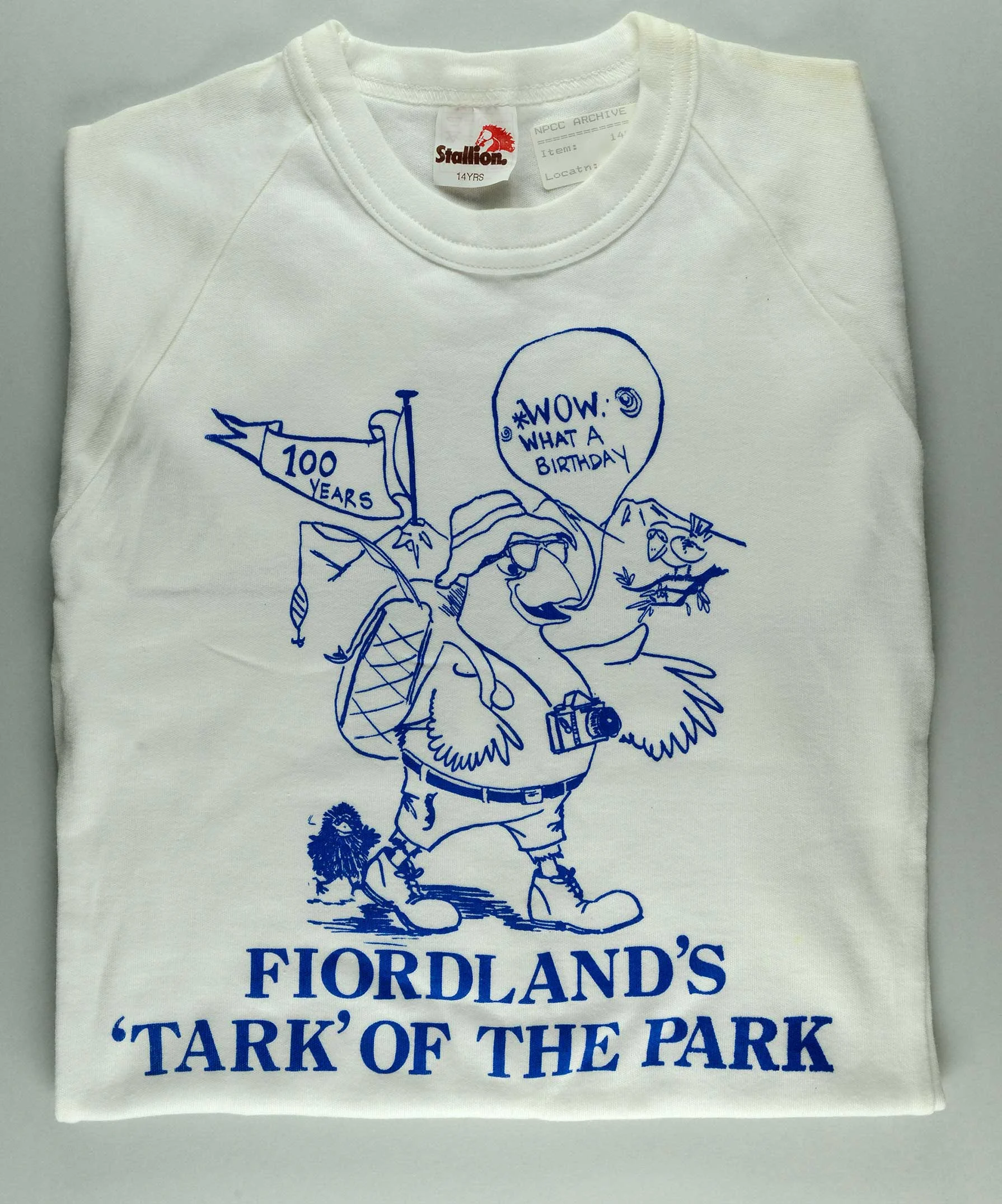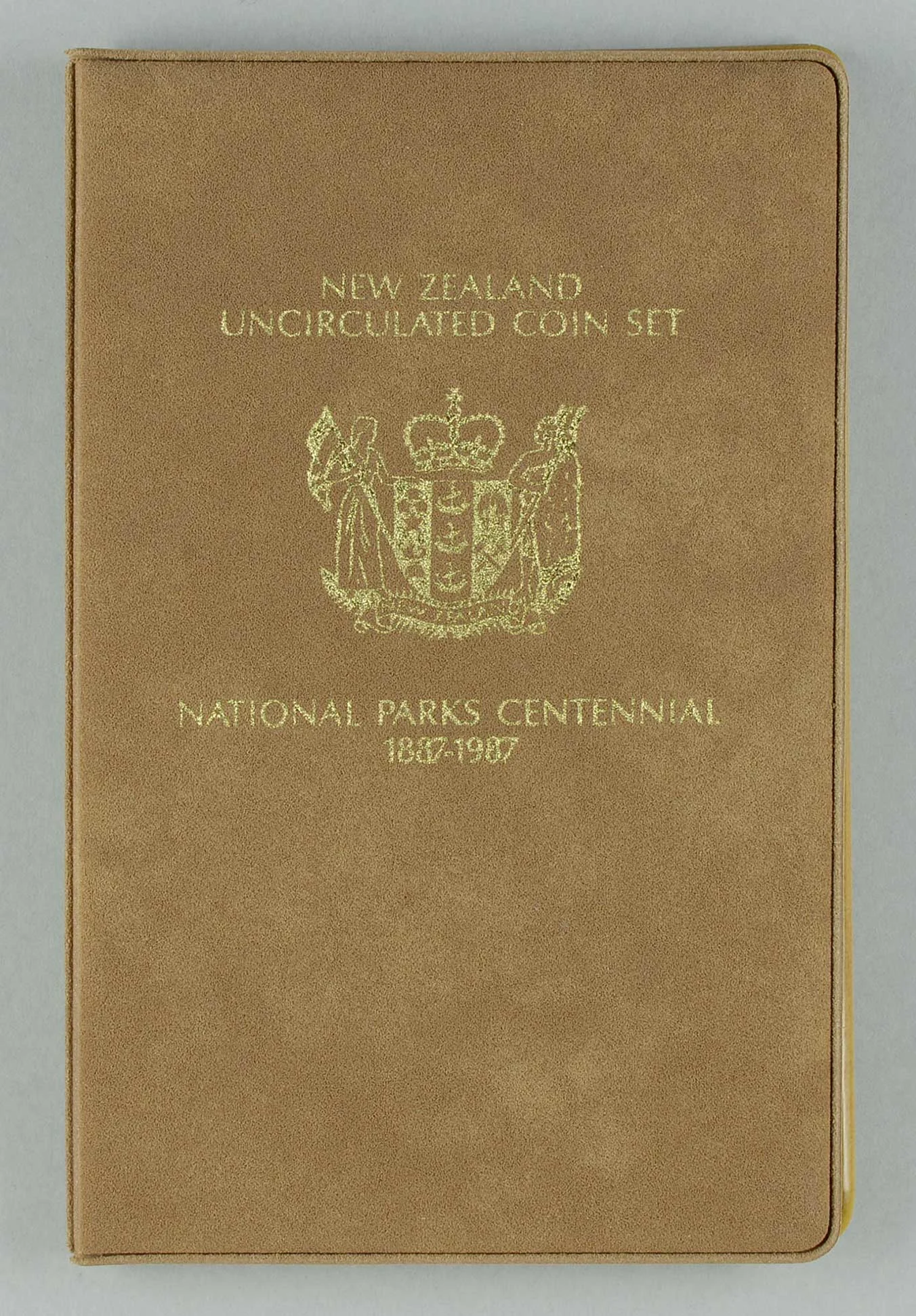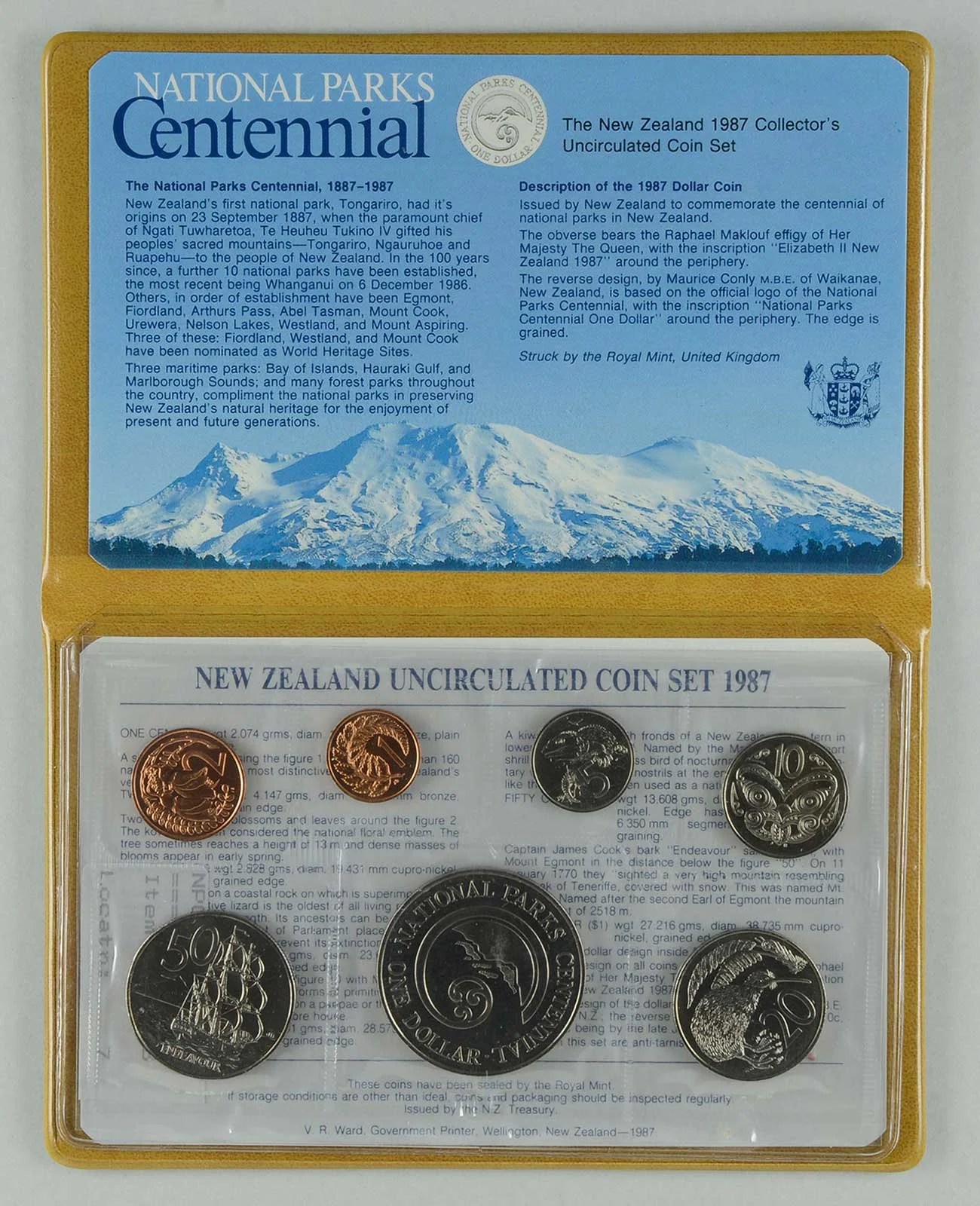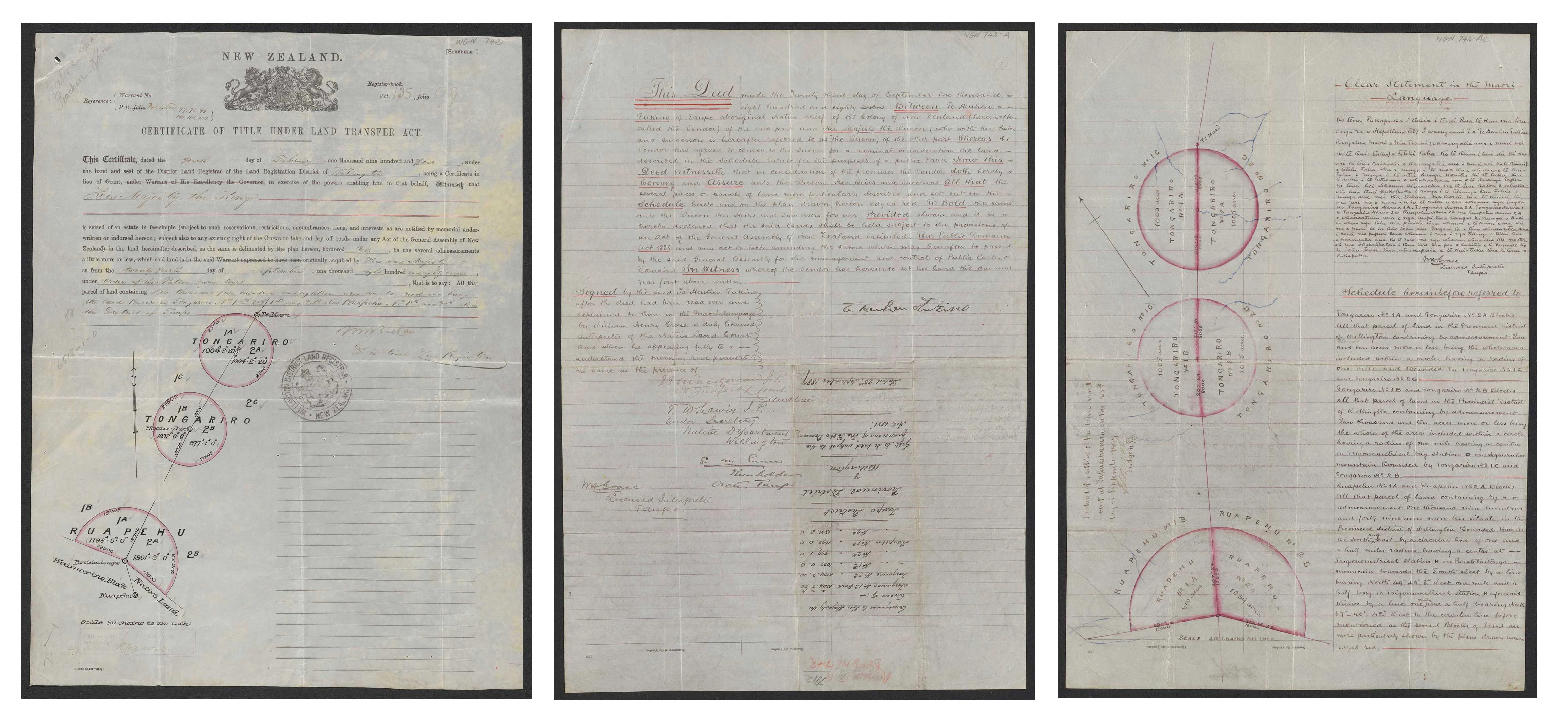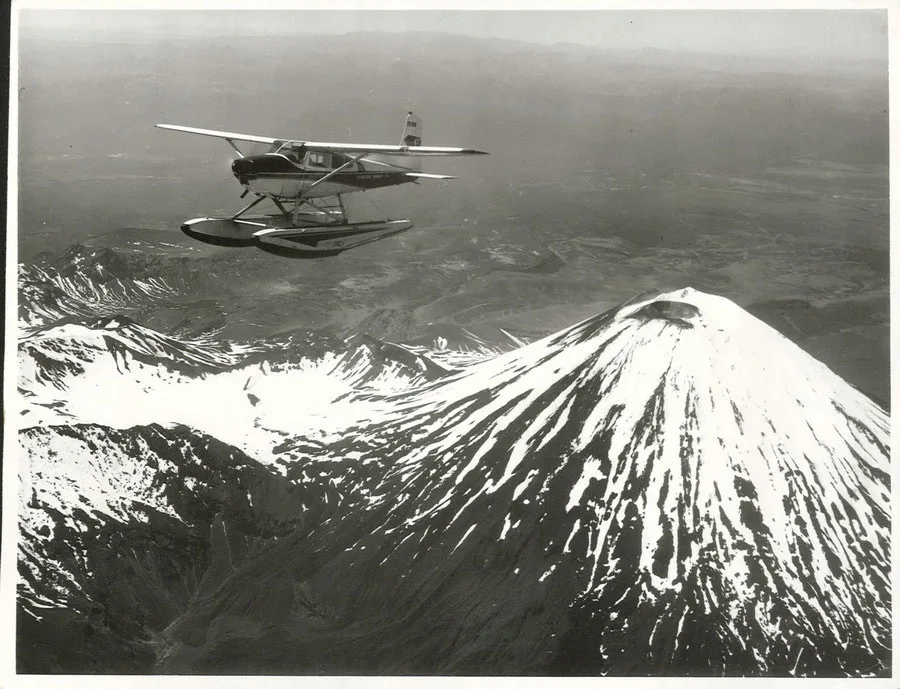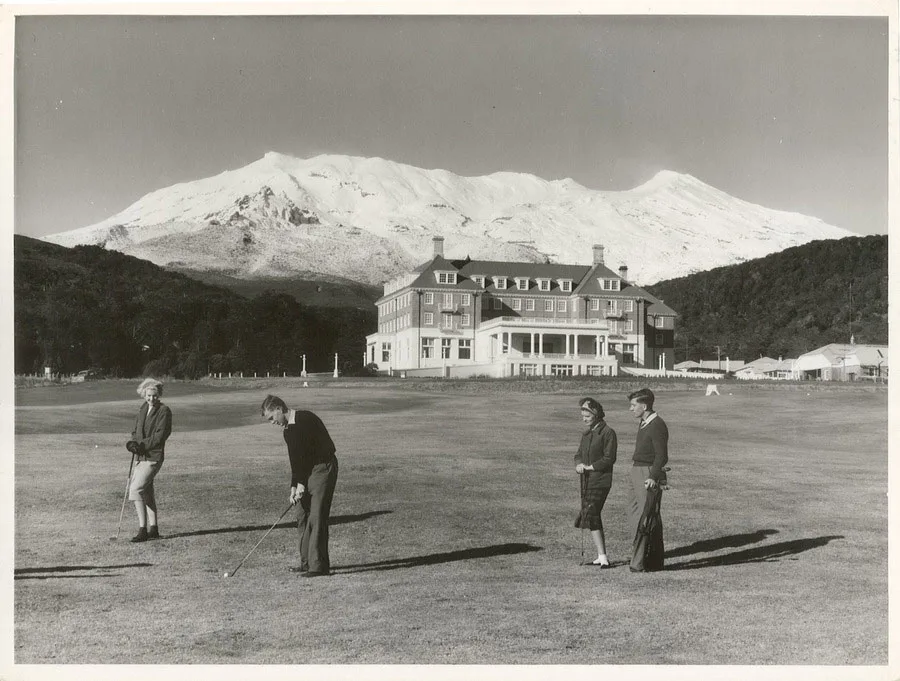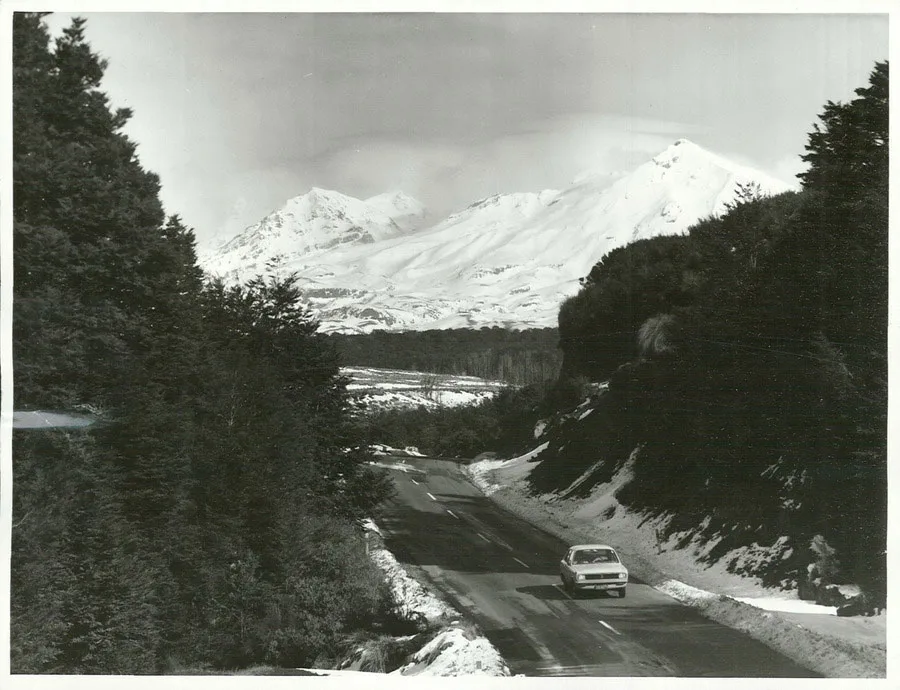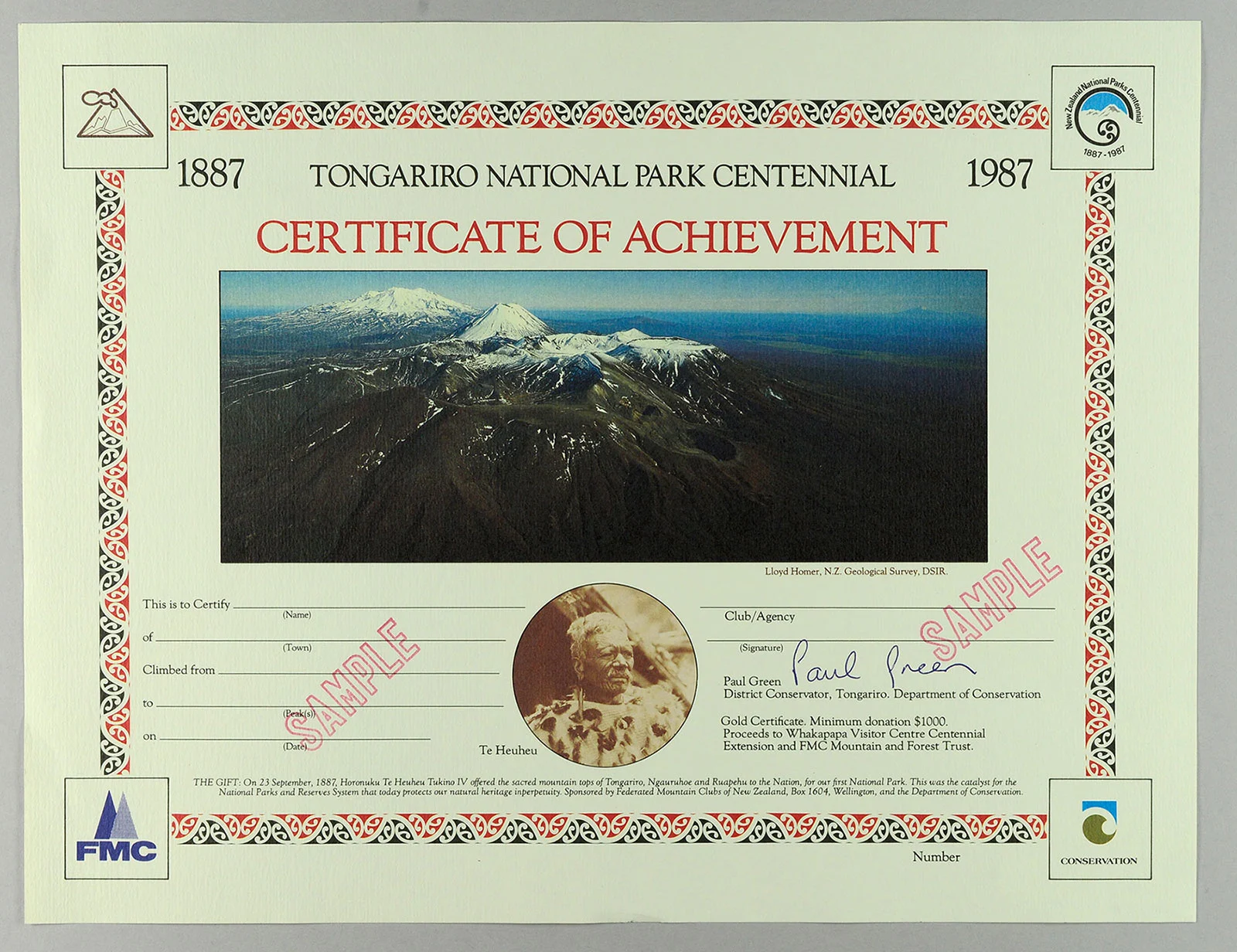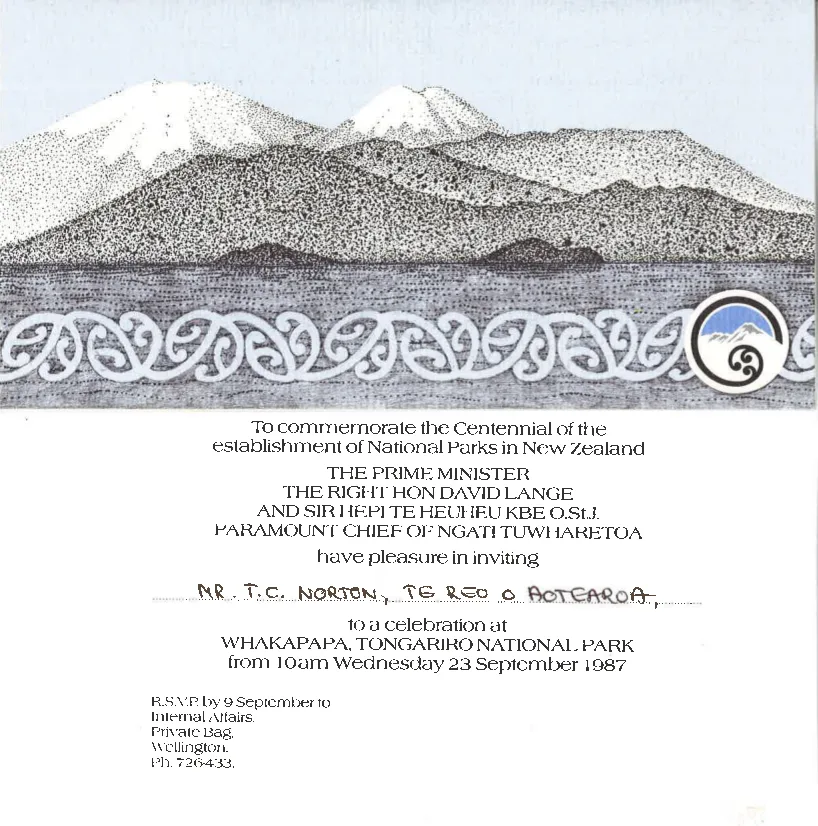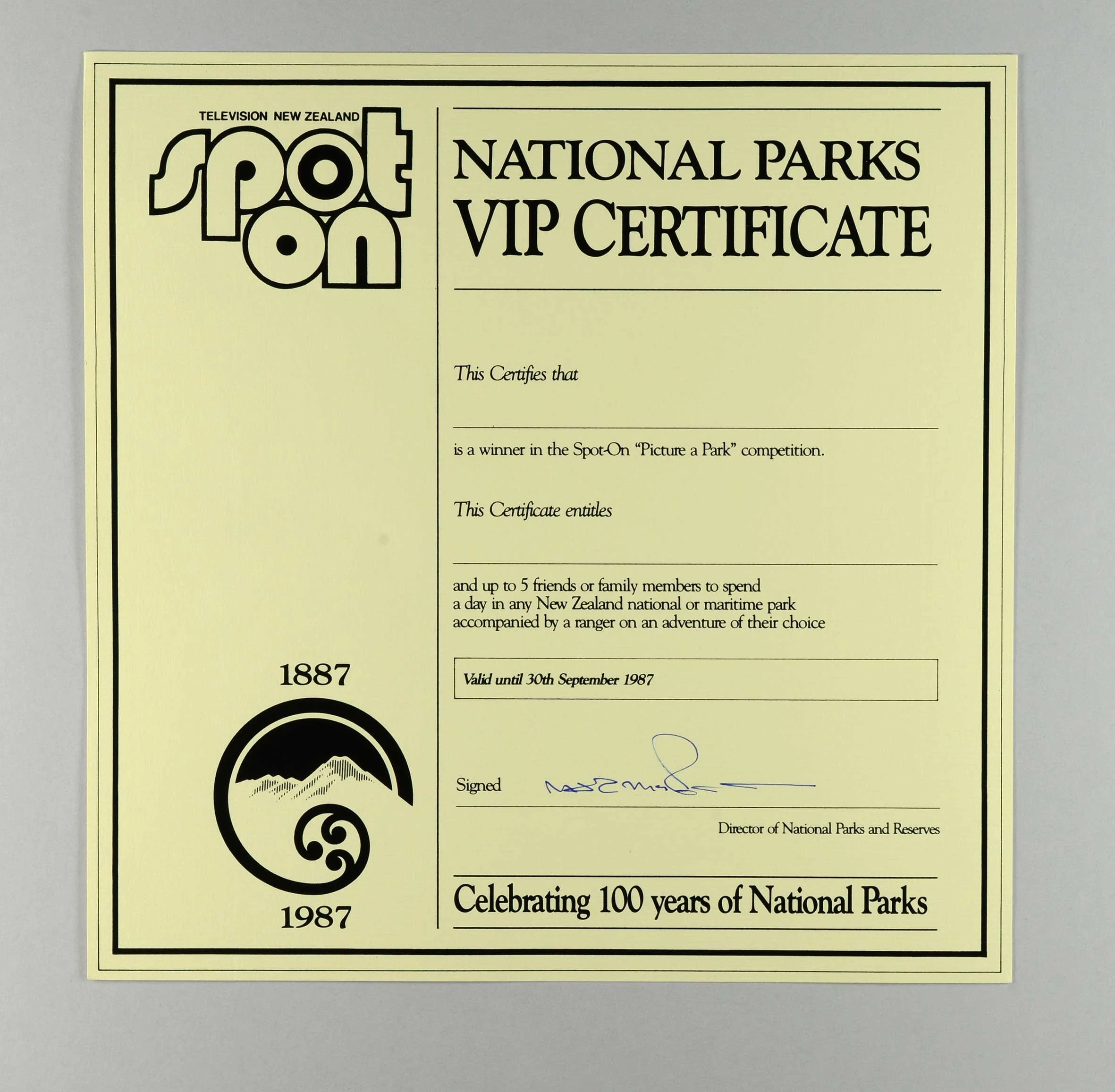Ka huraina e Utaina ngā pūkete pāka ā-motu ahurei
Utaina unearths unique national park records
Find out more about how the Utaina project team is rediscovering the records in our holdings. We’ll share some unique items from the archives, as well as the fascinating stories behind them.
Utaina is preserving our audiovisual heritage
We’re working with Te Puna Mātauranga o Aotearoa National Library of New Zealand and Ngā Taonga Sound and Vision to preserve and protect our audiovisual collections. Together, as part of the Utaina project, we’re digitising more than 460,000 items from the Crown’s audiovisual heritage collections. This multi-year project will ensure this taonga is accessible now and for future generations.
Learn more about the Utaina project
A race against time
Utaina is delivering the digitisation of audiovisual material at a scale and quality never seen before in Aotearoa New Zealand. It’s vital we do this work now, as every day the records continue to grow older and deteriorate further.
The technology needed to play many of them is becoming obsolete, and fewer people with the expertise to maintain it are available. The Utaina project accelerates our capability to deliver this work before it's too late.
Surveying the holdings at Te Rua Mahara o te Kāwantanga Archives New Zealand
Before we could send our records to be digitised, we needed to understand exactly what they contain, what state they’re in and whether they need special handling or treatment.
This meticulous work involved identifying and physically assessing every audiovisual item in our extensive collection. We’re now moving forward with digitising them.
With a primary focus on magnetic based audiovisual media, the Utaina project involves:
Audio cassettes
¼” open reel audio tapes
1-inch and 2-inch open reel video tape formats
VHS, U-matic , Betamax, Betacam , DV video tapes, and more
It also includes more obscure formats — like Sepmag (magnetic sound on film) and DAT (Digital Audio Tape).
Rediscovering records
We have over 7 million records here at Archives New Zealand. Once physical records are transferred to us and safely stored in our repository, some of them do not need to be accessed again for years. They securely lie in wait until they’re needed.
As part of their work surveying the holdings, the Utaina project team is uncovering some of these fascinating items. Once digitised, they’ll be available via Collections search so you can access them on a mobile device or computer from anywhere in the world.
This mahi also ensures the items are preserved and protected for future generations. Physical archives can get damaged or deteriorate over time. Digitisation protects our records and ensures people can access the taonga we hold now and in the future.
What we found
While surveying the Wellington repository for audiovisual items, the Utaina project team found a box of items from the Department of Conservation. Part of a series from the New Zealand National Parks Centennial Commission, it included:
a 7” vinyl single
sheet music and lyrics, and
3 audio cassette tapes.
-
![A bright yellow vinyl cover with black logos on the top and bottom]() Click to expandA 7” vinyl single featuring the song ‘Parks for people’ by Rob WinchAANS 105 R26293822
Click to expandA 7” vinyl single featuring the song ‘Parks for people’ by Rob WinchAANS 105 R26293822![A bright yellow vinyl cover with black logos on the top and bottom]() Click to expandA 7” vinyl single featuring the song ‘Parks for people’ by Rob WinchAANS 105 R26293822
Click to expandA 7” vinyl single featuring the song ‘Parks for people’ by Rob WinchAANS 105 R26293822 -
![Black circular vinyl with yellow label in the center]() Click to expandA 7” vinyl single featuring the song ‘Parks for people’ by Rob WinchAANS 105 R26293822
Click to expandA 7” vinyl single featuring the song ‘Parks for people’ by Rob WinchAANS 105 R26293822![Black circular vinyl with yellow label in the center]() Click to expandA 7” vinyl single featuring the song ‘Parks for people’ by Rob WinchAANS 105 R26293822
Click to expandA 7” vinyl single featuring the song ‘Parks for people’ by Rob WinchAANS 105 R26293822
-
![Cassette tape with a cover of mountains and blue sky, words written in the center 'Parks for People']() Click to expandSheet music and lyrics and a cassette tape featuring the song ‘Parks for people’ by Rob Winch.AANS 105 R26293824 and R26293823
Click to expandSheet music and lyrics and a cassette tape featuring the song ‘Parks for people’ by Rob Winch.AANS 105 R26293824 and R26293823![Cassette tape with a cover of mountains and blue sky, words written in the center 'Parks for People']() Click to expandSheet music and lyrics and a cassette tape featuring the song ‘Parks for people’ by Rob Winch.AANS 105 R26293824 and R26293823
Click to expandSheet music and lyrics and a cassette tape featuring the song ‘Parks for people’ by Rob Winch.AANS 105 R26293824 and R26293823 -
![Set of three cassettes with text Parks for People written on it.]() Click to expandSheet music and lyrics and a cassette tape featuring the song ‘Parks for people’ by Rob Winch.AANS 105 R26293824 and R26293823
Click to expandSheet music and lyrics and a cassette tape featuring the song ‘Parks for people’ by Rob Winch.AANS 105 R26293824 and R26293823![Set of three cassettes with text Parks for People written on it.]() Click to expandSheet music and lyrics and a cassette tape featuring the song ‘Parks for people’ by Rob Winch.AANS 105 R26293824 and R26293823
Click to expandSheet music and lyrics and a cassette tape featuring the song ‘Parks for people’ by Rob Winch.AANS 105 R26293824 and R26293823
All but one audio cassette featured a song called ‘Parks for people’, specially composed for the National Parks Centennial Commission. With music and lyrics by Rob Winch, the 3 minute 40 second track was manufactured and distributed by EMI records New Zealand.
As audiovisual items, these records will be digitised as part of Utaina. They’ll soon be easier to access and preserved for the future. But the box contained other items that many would be surprised to find in a government archive.
Button badges
-
![Circular badges with colourful illustrations and thick borders]() Click to expandColourful button badges, each representing a different NZ national or maritime park
Click to expandColourful button badges, each representing a different NZ national or maritime park![Circular badges with colourful illustrations and thick borders]() Click to expandColourful button badges, each representing a different NZ national or maritime park
Click to expandColourful button badges, each representing a different NZ national or maritime park
These colourful button badges feature artwork representing 12 national parks and 3 maritime parks. They’re a snapshot of a moment in time — Te Urewera was still a national park and both Kahurangi and Rakiura were yet to become one.
Te Urewera was disestablished as a national park in 2014 following the Ngāi Tūhoe Treaty of Waitangi settlement with the Crown. Kahurangi became one in 1996, and Rakiura was established as a national park in 2002.
Tommy Takahe soft toy and Kiwi figurine
-
![A soft toy of a blue bird with red beak wearing a hat, black shoes and carrying a backpack]() Click to expandA Tommy Takahe soft toy sampleAANS 8123 106 R20069867
Click to expandA Tommy Takahe soft toy sampleAANS 8123 106 R20069867![A soft toy of a blue bird with red beak wearing a hat, black shoes and carrying a backpack]() Click to expandA Tommy Takahe soft toy sampleAANS 8123 106 R20069867
Click to expandA Tommy Takahe soft toy sampleAANS 8123 106 R20069867 -
![A brown figurine with a red hat, a long yellow beak and a back pack holding a yellow stick]() Click to expandA Kiwi figurine that looks to be sculpted of clay wearing a hat and backpack and carrying an Egmont National Park flagAANS 8123 106 R20069867
Click to expandA Kiwi figurine that looks to be sculpted of clay wearing a hat and backpack and carrying an Egmont National Park flagAANS 8123 106 R20069867![A brown figurine with a red hat, a long yellow beak and a back pack holding a yellow stick]() Click to expandA Kiwi figurine that looks to be sculpted of clay wearing a hat and backpack and carrying an Egmont National Park flagAANS 8123 106 R20069867
Click to expandA Kiwi figurine that looks to be sculpted of clay wearing a hat and backpack and carrying an Egmont National Park flagAANS 8123 106 R20069867
This Tommy Takahe soft toy sports a feathered cap, bright blue backpack and black boots. His label states “I am almost extinct and live only in the mountains of Fiordland NZ. Please take care of me.”
Today, takahē are still at risk. They’re classified by the Department of Conservation as Threatened-Nationally Vulnerable— but they’re also described as “a conservation icon and a survivor”. Like Tommy Takahe’s tag says, when the National Park Centennial Year took place, takahē were only found in Fiordland’s remote Murchison Mountains. But in 2018, Kahurangi National Park became home to the first wild population of takahē outside this remote refuge.
T-shirts
-
![A folded beige coloured shirt with a blue cartoon and words written 'Fiordland's 'Tark' of the park.]() Click to expandA t-shirt with an illustration of the Tommy Takahe character exclaiming: “Wow: what a birthday” on the frontAANS 8123 106 R20069867
Click to expandA t-shirt with an illustration of the Tommy Takahe character exclaiming: “Wow: what a birthday” on the frontAANS 8123 106 R20069867![A folded beige coloured shirt with a blue cartoon and words written 'Fiordland's 'Tark' of the park.]() Click to expandA t-shirt with an illustration of the Tommy Takahe character exclaiming: “Wow: what a birthday” on the frontAANS 8123 106 R20069867
Click to expandA t-shirt with an illustration of the Tommy Takahe character exclaiming: “Wow: what a birthday” on the frontAANS 8123 106 R20069867 -
![A folded pink T-shirt with a green fern and black koru and come text written in a circle around then logo.]() Click to expandA pink National Parks Centennial t-shirt featuring a ponga fern surrounded by the words ‘See what you’ve been missing’AANS 8123 106 R20069867
Click to expandA pink National Parks Centennial t-shirt featuring a ponga fern surrounded by the words ‘See what you’ve been missing’AANS 8123 106 R20069867![A folded pink T-shirt with a green fern and black koru and come text written in a circle around then logo.]() Click to expandA pink National Parks Centennial t-shirt featuring a ponga fern surrounded by the words ‘See what you’ve been missing’AANS 8123 106 R20069867
Click to expandA pink National Parks Centennial t-shirt featuring a ponga fern surrounded by the words ‘See what you’ve been missing’AANS 8123 106 R20069867
Commemorative coins
-
![A light brown bool with some text and a logo in golden colour]() Click to expandThe front cover of the National Parks Centennial coin setAANS 8123 106 R20069867
Click to expandThe front cover of the National Parks Centennial coin setAANS 8123 106 R20069867![A light brown bool with some text and a logo in golden colour]() Click to expandThe front cover of the National Parks Centennial coin setAANS 8123 106 R20069867
Click to expandThe front cover of the National Parks Centennial coin setAANS 8123 106 R20069867 -
![A set of 7 coins and information written on the top cover]() Click to expandThe inside of the National Parks Centennial coin set, featuring 7 coins including the 1987 National Parks Centennial One Dollar coinAANS 8123 106 R20069867
Click to expandThe inside of the National Parks Centennial coin set, featuring 7 coins including the 1987 National Parks Centennial One Dollar coinAANS 8123 106 R20069867![A set of 7 coins and information written on the top cover]() Click to expandThe inside of the National Parks Centennial coin set, featuring 7 coins including the 1987 National Parks Centennial One Dollar coinAANS 8123 106 R20069867
Click to expandThe inside of the National Parks Centennial coin set, featuring 7 coins including the 1987 National Parks Centennial One Dollar coinAANS 8123 106 R20069867
Another significant item from the series uncovered by the Utaina project team is this set of National Parks Centennial coins. It includes a 1987 National Parks Centennial One Dollar coin. Sealed by the United Kingdom’s Royal Mint, it features a design by Maurice Conly based on the official logo of the National Parks Centennial.
Connect to the past, prepare for the future
At first glance, you might not realise these items form part of the record of government in Aotearoa New Zealand. You may also wonder why we have them at all.
But here at Archives New Zealand, every item — including this series — goes through a comprehensive process before it arrives in our holdings. The public archives we retain and preserve need to align with our Public sector archival selection statement:
Me titiro whakamuri, ki te anga whakamua.
Connect to the past, prepare for the future.
How public archives are selected
For it to be in our care, a record needs to go through the process of archival appraisal. This determines how the record should be managed and whether it should be kept as a public archive. Our archival selection principles help with this decision.
Principle 1 — Information and records that provide evidence of the authority, functions and activities of the New Zealand public sector.
Principle 2 — Information and records that provide evidence of recognition and respect for te Tiriti o Waitangi Treaty of Waitangi principles and fulfilment of the Crown’s obligations, and evidence of the absence or failure of these.
Principle 3 — Information and records that contribute to individual and community knowledge, identity and memory.
Long-term value
These records exemplify our work to record the public sector’s authority, functions and activities — ensuring transparency and accountability for the benefit of all New Zealanders. They’re also just some of many unique pieces uncovered by Utaina.
The story behind the archives — New Zealand’s national parks
Every record has a story to tell. For these, it’s the tale of how New Zealand’s national parks came to be — and how they’ve evolved since. They also chronicle the Department of Conservation’s efforts to protect the wildlife that live there. Although seemingly innocuous, this merchandise is the culmination of 100 years of New Zealand public sector decision making and activities.
Tongariro National Park — Aotearoa’s first national park
Tongariro was New Zealand’s first national park. In the lead up to its establishment, paramount Ngāti Tūwharetoa chief Horonuku Te Heuheu Tūkino IV worried the ancestral mountains of his iwi (tribe) would be divided and sold. He predicted:
“They will become of no account, for the tapu will be gone. Tongariro is my ancestor, my tupuna; it is my head; my mana centres around Tongariro.”
On 23 September 1887, the rangatira signed a deed of gift with the Crown. He gave the 3 mountains at the centre of Tongariro National Park — Tongariro, Ruapehu and Ngāuruhoe — to Aotearoa. Although this action meant Ngāti Tūwharetoa no longer directly controlled the mountains, it ensured they would remain untouched.
-
![Set of three old handwritten letters with few red stamps]() Click to expandThe deed of gift for Tongariro National Park signed by Horonuku Te Heuheu Tūkino IVABWN 8102 344 WGN 742 R23475041
Click to expandThe deed of gift for Tongariro National Park signed by Horonuku Te Heuheu Tūkino IVABWN 8102 344 WGN 742 R23475041![Set of three old handwritten letters with few red stamps]() Click to expandThe deed of gift for Tongariro National Park signed by Horonuku Te Heuheu Tūkino IVABWN 8102 344 WGN 742 R23475041
Click to expandThe deed of gift for Tongariro National Park signed by Horonuku Te Heuheu Tūkino IVABWN 8102 344 WGN 742 R23475041
Then 2,640 hectares, Tongariro National Park now stretches over 79,000. Internationally recognised for its significant cultural and natural value, the park became a UNESCO World Heritage site in 1993.
-
![Top view photo of a snow clad mountain and a floatplane flying in the sky]() Click to expandA floatplane flies over Mount Ngauruhoe, Tongariro National Park in October 1972AAQT 6539 126 B977 R24805009
Click to expandA floatplane flies over Mount Ngauruhoe, Tongariro National Park in October 1972AAQT 6539 126 B977 R24805009![Top view photo of a snow clad mountain and a floatplane flying in the sky]() Click to expandA floatplane flies over Mount Ngauruhoe, Tongariro National Park in October 1972AAQT 6539 126 B977 R24805009
Click to expandA floatplane flies over Mount Ngauruhoe, Tongariro National Park in October 1972AAQT 6539 126 B977 R24805009 -
![4 Golfers on a golf course with a chateau and snow clad mountain in the background]() Click to expandGolfers near Chateau Tongariro, Tongariro National Park, in July 1960 with Mount Ruapehu in the backgroundAAQT 6539 56 A66211 R24459502
Click to expandGolfers near Chateau Tongariro, Tongariro National Park, in July 1960 with Mount Ruapehu in the backgroundAAQT 6539 56 A66211 R24459502![4 Golfers on a golf course with a chateau and snow clad mountain in the background]() Click to expandGolfers near Chateau Tongariro, Tongariro National Park, in July 1960 with Mount Ruapehu in the backgroundAAQT 6539 56 A66211 R24459502
Click to expandGolfers near Chateau Tongariro, Tongariro National Park, in July 1960 with Mount Ruapehu in the backgroundAAQT 6539 56 A66211 R24459502 -
![A car driving on a road, mountains on both sides and a snow clad mountain in the background]() Click to expandA car driving on Desert Road in July 1975 with Mount Ruapehu in the backgroundAAQT 6539 154 B7934 R24810853
Click to expandA car driving on Desert Road in July 1975 with Mount Ruapehu in the backgroundAAQT 6539 154 B7934 R24810853![A car driving on a road, mountains on both sides and a snow clad mountain in the background]() Click to expandA car driving on Desert Road in July 1975 with Mount Ruapehu in the backgroundAAQT 6539 154 B7934 R24810853
Click to expandA car driving on Desert Road in July 1975 with Mount Ruapehu in the backgroundAAQT 6539 154 B7934 R24810853
100 years of New Zealand national parks
1987 marked 100 years since Horonuku signed the deed of gift with the Crown and our first national park was born. To commemorate the occasion, the National Parks Centennial Commission was formed and tasked with planning the celebrations of the centennial year.
The Commission organised a variety of commemorative events and projects across the country. The records in the box uncovered by Utaina reflect some of these activities.
Prime minister David Lange and paramount chief of Ngāti Tūwharetoa Sir Hepi Te Heuheu hosted a special event held at Whakapapa, Tongariro National Park. Here, a commemorative plaque was unveiled.
A triathlon with “287 kilometres of running, cycling and canoeing from Iwikau on Mt Ruapehu, to Castlecliff Beach near the mouth of the Wanganui River” was held.
An Arthur’s Pass train excursion took place — including the opening of a new accessible walkway at Greyney’s Flat.
Certificates of achievement were awarded to climbers by the Department of Conservation.
Television New Zealand created a series of documentaries about the National Parks.
-
![A certificate on a light green paper with a photo of a snow-clad mountain in the center and a colourful border]() Click to expandA certificate of achievement for climbers from the Department of ConservationAANS 8123 106 R20069867
Click to expandA certificate of achievement for climbers from the Department of ConservationAANS 8123 106 R20069867![A certificate on a light green paper with a photo of a snow-clad mountain in the center and a colourful border]() Click to expandA certificate of achievement for climbers from the Department of ConservationAANS 8123 106 R20069867
Click to expandA certificate of achievement for climbers from the Department of ConservationAANS 8123 106 R20069867 -
![A certificate with a photo of snowclad mountains on the top, a decorative border and some text]() Click to expandAn invitation to a centennial eventADFG 15424 15 C R8395042
Click to expandAn invitation to a centennial eventADFG 15424 15 C R8395042![A certificate with a photo of snowclad mountains on the top, a decorative border and some text]() Click to expandAn invitation to a centennial eventADFG 15424 15 C R8395042
Click to expandAn invitation to a centennial eventADFG 15424 15 C R8395042 -
![A certificate on a yellow paper with words 'Spot on' and 'National parks VIP certifcate']() Click to expandA national parks VIP certificate for the winner of the Television New Zealand SpotOn ‘Picture a Park’ competitionAANS 8123 106 R20069867
Click to expandA national parks VIP certificate for the winner of the Television New Zealand SpotOn ‘Picture a Park’ competitionAANS 8123 106 R20069867![A certificate on a yellow paper with words 'Spot on' and 'National parks VIP certifcate']() Click to expandA national parks VIP certificate for the winner of the Television New Zealand SpotOn ‘Picture a Park’ competitionAANS 8123 106 R20069867
Click to expandA national parks VIP certificate for the winner of the Television New Zealand SpotOn ‘Picture a Park’ competitionAANS 8123 106 R20069867
The National Parks Centennial Commission
The National Parks Centennial Commission operated from 1983 to 1988. Upon completion of their work, members received this note of appreciation from Helen Clark — then Minister of Conservation — and Department of Conservation Director General David McDowell. In it, they’re thanked for ‘carrying forward the vision of “Parks for People” into the second century’.
-
![An old black and white photo of a group people on top of a paper and some text below]() Click to expandA thank you note for members of the National Parks Centennial CommissionAANS 8123 106 R20069867
Click to expandA thank you note for members of the National Parks Centennial CommissionAANS 8123 106 R20069867![An old black and white photo of a group people on top of a paper and some text below]() Click to expandA thank you note for members of the National Parks Centennial CommissionAANS 8123 106 R20069867
Click to expandA thank you note for members of the National Parks Centennial CommissionAANS 8123 106 R20069867
The national parks of Aotearoa today
Today, the number of national parks in New Zealand has risen to 13. More than 130 years after the first one was created, these parks continue to protect our precious natural environment and the flora and fauna that call it home.
Visitors from across the globe visit to soak up the diverse scenery, observe the native wildlife and enjoy a range of recreational activities such as skiing, tramping, caving, fishing and traversing the Great Walks. Many of the parks have been recognised by UNESCO as world heritage sites for their scientific and cultural significance.
From north to south, New Zealand’s current national parks are:
Tongariro, on the Volcanic Plateau
Egmont, in Taranaki
Whanganui, north of Whanganui
Abel Tasman, north-west of Nelson
Kahurangi, north-west of Nelson
Nelson Lakes, south of Nelson
Paparoa, on the West Coast
Arthur’s Pass, in North Canterbury
Westland Tai Poutini, on the West Coast
Aoraki Mount Cook, in South Canterbury
Mount Aspiring, in Otago
Fiordland
Rakiura, on Stewart Island.
Utaina helps us share stories like this
These unusual national park records show that when it comes to archives, there’s often more than meets the eye. The important mahi of the Utaina project team is bringing records like these — and the stories behind them — to the forefront.
Utaina is a significant project, unlike anything ever undertaken in New Zealand. Alongside Te Puna Mātauranga o Aotearoa National Library of New Zealand and Ngā Taonga Sound and Vision, our work to digitise our audiovisual collections will ensure this taonga is accessible now and preserved for future generations.
[All photos in the blog by Simon Jay, Preservation Technician, December 2023]
